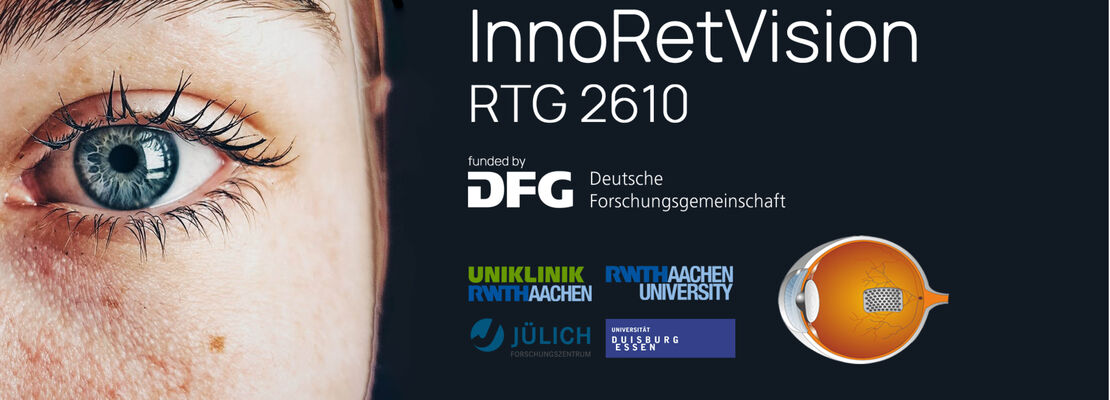Learn what we do -
The RTG 2610 InnoRetVision Profile
Scientific Excellence
Interfacing the visual system with electrical or other stimulators to evoke visual percepts in blind patients has been pursued by several groups in Germany since 1995. These activities together with activities in the USA, Japan, and Australia, led to the approval of two medical products, which were implanted in blind Retinitis Pigmentosa (RP) patients. None of the groups succeeded in restoring high quality percepts and several bottlenecks have been identified.
This has been the starting point of the RTG 2610 “InnoRetVision” with its mission to get back into basic science research and tackle fundamental issues of neurodegeneration of the retina. The RTG 2610 consists of interdisciplinary researchers with an excellent record of accomplishment in their research field, indicated by their publications in internationally renowned journals, their success in applying for third party funded projects, and their role in the scientific community. Prof. Mokwa and Prof. Walter led several research projects and groups in the past, covering a variety of aspects of Artificial Vision. Together with Prof. Müller and Prof. Offenhäusser, they organized the bi-annual Artificial Vision Conferences 2013, 2015, 2017, and 2019 in Aachen. This conference is a well-known platform for many groups worldwide to present their data to a highly specialized audience and we already hosted presenters from the USA, Korea, Japan, Australia, and many other countries.
In RTG 2610, the group of PIs brings together a unique variety of knowledge, skills, methods, and available infrastructure to work together towards the 21st century generation of adaptive neuronal implants. The basis for successful collaboration has been laid by several common projects. We are confident to solve major challenges in the area of Artificial Vision in our research training group action. In contrast to research and development units in companies with their economic limits and targets, the RTG is only committed to scientific excellence and sustainability to the benefit of the society.
Innovation
Up to now, the functional results of retinal implants are very limited concerning resolution, field of vision, control flexibility, and long-term stability. In nearly all patients, phosphenes were elicited, but a perception of forms was achieved only in very rare cases. We have identified several challenges that need to be addressed in order to improve the benefit of modern retinal implants. In this RTG, we will work on these significant challenges. For example, none of the existing systems considers the degradation of neural connections in the retina or the visual cortex for visual information processing. RTG 2610 will study this degeneration process in the retina as well as the secondary changes in the brain, and use this information for new implant and stimulation concepts. Nanotechnologies will be used to increase the electrode number, to improve contact to retinal nerve cells, and to provide redundancy. 2D-materials will be used to improve charge delivery as well a long-term stability of the implants. Phased array emitters will be used for a precise optical transfer of the necessary image data to selected optical receivers of the implant after appropriate visual signal processing. In addition, we will study the influence of neuromodulating drugs or genetic modulation to increase the efficacy of the stimulation. We will follow these different approaches in coordinated interaction between the research projects. We are convinced that by following several innovative approaches we can overcome some of the current challenges in retinal implant technology with the long-term goal to considerably improve the outcome of retinal stimulation to cure retinal degeneration-associated blindness.
International Networking
Worldwide, several groups are working on retinal implants and other implantable devices to restore vision using electrical stimulation in certain areas of the visual system. The AC-J-Du-group is part of this international Artificial Vision community. Our group organizes the bi-annual Artificial Vision Conference (www.artificial-vision.org).This conference is an important platform for the exchange of ideas and the planning of joint projects between the groups. The community also meets at the ARVO conference every year and every two years at the Eye and the Chip meeting in Detroit, USA. There is profound exchange of RTG members with internationally acclaimed research groups all over the world.

